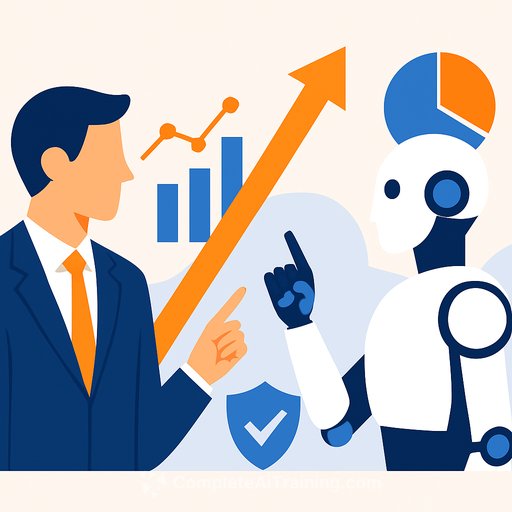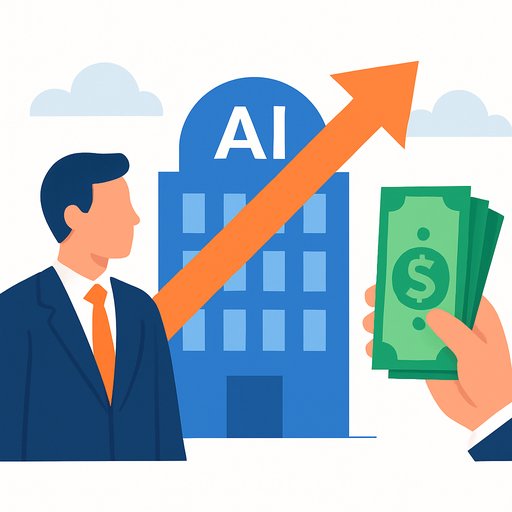AI, Crypto, Private Markets: What Kind of Bubbles Might Be Next?
Markets feel hot. Crypto is back in headlines, AI capex is setting new records, and private markets are writing big checks. Is this a bubble? Not yet a red alert, but it's a good time to build a watchlist of what you don't fully understand.
The first filter: is it a productive bubble? Some bubbles leave real assets behind. The dot-com era left fiber networks we still use. Others-like gold or some cryptocurrencies-don't leave much once prices crack. You want exposure to the former and hedges against the latter.
AI: Monetization, Timelines, and the Real Profit Math
The question isn't if AI is big; it's whether today's investment levels can be monetized. Current multiples aren't at dot-com extremes, but the hurdle is high. Rough math suggests you need about $1 trillion in profits to justify the capex boom. Many institutional clients expect hard signs of monetization in 18-24 months.
Consumers won't pay directly for LLMs. Enterprises will. Profitability, for now, likely comes from labor cost reductions-slower hiring, selective layoffs-more than net-new revenue. There are social risks too: data centers use a lot of electricity, pushing up local power costs and feeding inflation. That can fuel local pushback on new facilities.
- Manager prompts: What's the payback period for our AI spend? Where do labor savings show up in P&L within 12-24 months?
- Track revenue per watt of compute and per GPU-hour. If it's not rising, you're subsidizing hype.
- Stress test for higher power prices and curtailment risk near planned data center sites.
For context on energy use, see the IEA's view on data centers and networks here.
Private Markets: Fueling AI and Quietly Raising Systemic Risk
The bigger risk may not be AI valuations-it's the plumbing behind them. A concentrated club of tech giants is financing each other's AI buildout. Some marquee projects are still unlisted, still loss-making, and yet announcing massive capex plans.
AI growth is being funded heavily with private debt, and only about half of total AI investment is covered by internal cash flows. AI now represents more than 14% of investment-grade debt. The risk turns systemic if banks step in to finance private debt exposures at scale. We're already seeing banks linked to failed private deals and off-balance sheet rounds that won't show cracks until later.
One accounting wrinkle to flag: data centers are amortized over roughly six years while the chips inside them may need replacement in two. That gap can hide true cash burn and ROIC.
- Manager prompts: Map your vendor and lender concentration. Who ultimately funds the projects your business relies on?
- Ask for look-through exposure to private credit and off-balance sheet obligations in your counterparties.
- Model a two-year chip refresh cycle against a six-year depreciation schedule. Does EBITDA hold up after year two?
- Monitor correlations between regional bank balance sheets and private credit markets.
Crypto and Stablecoins: Quiet Pressure on the Short End
Stablecoins-dollar-backed tokens-are scaling with broader retail access. That creates captive demand for T-bills. The U.S. government appears comfortable issuing more short-term debt to meet that demand.
The catch: the Fed's higher rates support the front end while issuance tilts short. Over time, if stablecoins become a dominant buyer of T-bills, that dynamic could complicate policy and introduce new plumbing risks. Treasuries are the core collateral of global finance-any shift in who holds them, and why, matters.
- Manager prompts: If your treasury operations touch money market funds, stablecoins, or tokenized cash, track counterparty exposure and settlement risk.
- Watch the share of Treasury issuance under one year and policy signals on stablecoin regulation.
For an overview of structural risks in stablecoins, see BIS analysis here.
Practical Bubble Detector for Management Teams
- Monetization clock: 18-24 months to show revenue impact or clear cost saves from AI projects. Set a kill date before funding rounds do it for you.
- Unit economics: Rising revenue per watt, per GPU-hour, and per seat. Falling customer acquisition cost for AI features, not just usage spikes.
- Balance sheet checks: Look-through exposure to private credit. Note cov-lite prevalence and debt stacked at floating rates.
- Accounting sanity: Align depreciation with hardware refresh cycles; highlight the cash gap if they don't match.
- Energy sensitivity: Scenario test +25-50% electricity costs and local restrictions on new data centers.
- Counterparty health: Track bank participation in private debt deals. Rising overlap is a late-cycle signal.
- Policy watch: Stablecoin rules, Treasury issuance mix, and any pressure on central bank independence.
What to Do Now
Build a one-page risks dashboard for AI, private credit, and crypto plumbing. Review it quarterly with finance and ops. Pre-commit exit rules if monetization slips or energy costs spike.
Diversify vendors and funding sources. Tie AI budgets to measurable labor savings and customer willingness to pay, not just model benchmarks. Keep a close link between your treasury team and whoever negotiates cloud and chip contracts.
If you're upskilling managers on AI ROI and tooling, this resource can help: AI courses by job.
The Takeaway
No flashing sirens yet-but plenty of dry tinder. Favor productive assets, demand shorter paybacks, and watch the plumbing: who funds your growth, and on what terms. That's where bubbles quietly form-and where they break first.
Your membership also unlocks:






